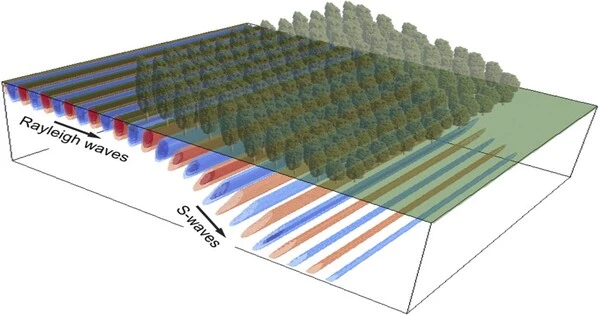Seismic metamaterials are a type of material that is used to manipulate and control seismic waves, which are generated during earthquakes and other seismic events. These materials are microstructure-engineered to have unique properties that can alter the behavior of seismic waves passing through them.
Metamaterials are derived from the field of optics, where materials are designed to control the propagation of light in novel ways. Seismic metamaterials apply this concept to seismic waves, allowing them to be controlled in terms of transmission, reflection, and absorption.
A seismic metamaterial is a metamaterial that is intended to mitigate the negative effects of seismic waves on artificial structures located on or near the earth’s surface. Current seismic metamaterial designs make use of borehole configurations, trees, or proposed underground resonators to act as a large scale material.
The key principle underlying seismic metamaterials is wave propagation manipulation via negative refraction or wave bending. Seismic waves can be redirected or focused by carefully designing the material’s microstructure, potentially reducing their impact on structures or even guiding them away from critical areas.
Arrays of repeating unit cells that are specifically designed to interact with seismic waves are one method for creating seismic metamaterials. These unit cells can be made of various materials or have complex geometries that cause specific wave behaviors. Researchers can create an effective medium with unique seismic properties by arranging these unit cells in a periodic pattern.
Seismic metamaterials have the potential for various applications in earthquake engineering and structural design. Some potential applications include:
- Seismic wave steering: By manipulating the propagation of seismic waves, it may be possible to steer them away from vulnerable structures or redirect their energy to less critical areas.
- Seismic wave absorption: Metamaterials can be designed to absorb and dissipate seismic energy, reducing the impact on structures and minimizing damage.
- Vibration isolation: Metamaterials can be employed to isolate structures from seismic vibrations, preventing them from being transmitted and potentially damaging sensitive equipment or structures.
- Seismic cloaking: Similar to the concept of optical invisibility cloaks, seismic metamaterials could be used to divert seismic waves around a structure, making it effectively invisible to those waves.
Experiments have revealed that artificially induced seismic waves cause both reflections and bandgap attenuation. These are the first experiments to show that seismic metamaterials can be measured at frequencies lower than 100 Hz, where Rayleigh wave damage is the most damaging to artificial structures.
A worldwide network of earthquake detection stations records over a million earthquakes each year. The velocity of seismic waves depends on the density and elasticity of the earth’s materials. In other words, as seismic waves travel through different materials in the earth, their speeds vary. Body waves and surface waves are the two main components of a seismic event. Both have distinct modes of wave propagation.
Although the concept of seismic metamaterials is still in its early stages, it has the potential to improve the resilience of structures in earthquake-prone areas. However, seismic metamaterials are still in the experimental stage, and practical implementation and widespread adoption may necessitate further advances in material science and engineering.
















